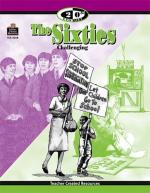|
This section contains 337 words (approx. 2 pages at 300 words per page) |

|
There was one major problem with computers. All the memory was lost when the power was turned off. But huge magnetic tapes can store vast amounts of data and do not rely on electricity to maintain them. So an electronic equivalent of magnetic tape memory had to be possible. The breakthrough came from Bell Labs in 1969. Andrew H. Bobeck developed bubble memory. The bubble memory is based on certain iron compounds mixed with the element yttrium and a rare-earth metal. Within this structure, memory is stored in lines or stripes. If a weak magnet is placed around the material, the lines shrivel into bubbles. Moving the bubbles around in the substrate gives the controlled memory required for a computer system. As long as the magnet around the bubbles is never removed, the memory storage is permanent. This created a major stir in the business...
|
This section contains 337 words (approx. 2 pages at 300 words per page) |

|




